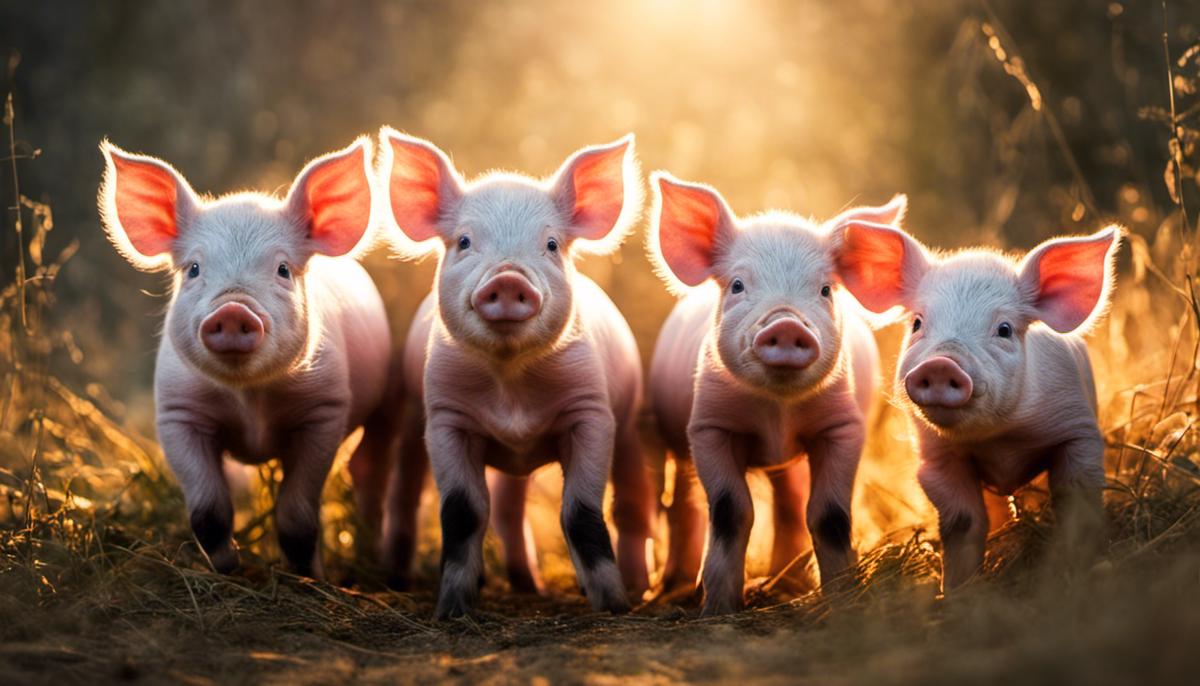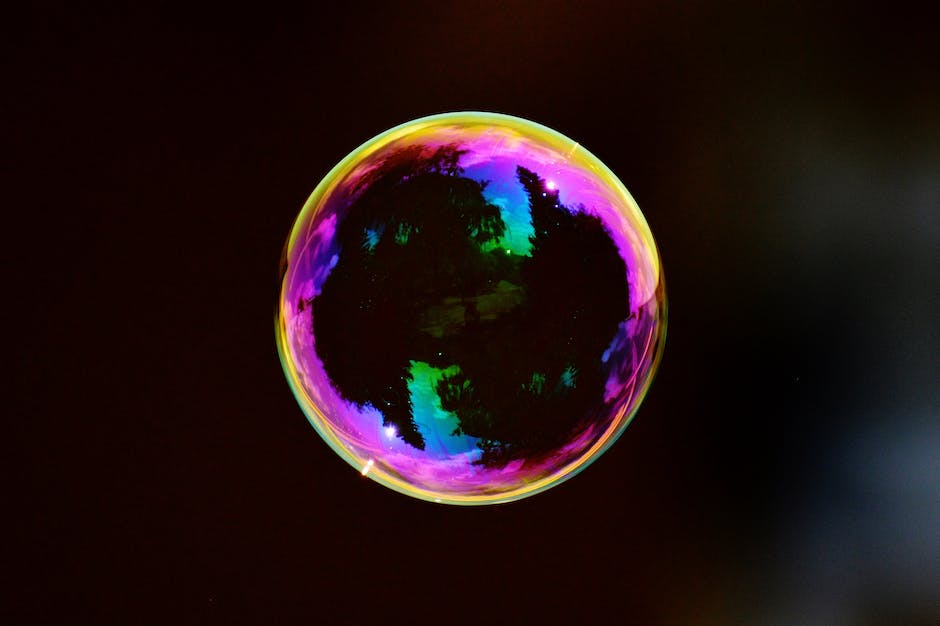In the intriguing realm of dreams, the manifestation of various symbols and images opens the door to profound insights about us and our psyche. Among this wide assortment of dream imagery, the appearance of piglets presents a compelling topic of exploration. This essay delves into the underlying psychology of dream interpretation, specifically focusing on piglets. We traverse through the cultural and historical significance of piglets, which, while often overlooked, could have a consequential impact on our dream content. The discussion further deepens with the inclusion of prominent theories and interpretations about piglet dreams from notable scholars, evoking a nuanced understanding of their implications. Lastly, we delve into how personal psychology molds our dreams about piglets, adding another tier to our comprehension of the mysterious relationship between our mental states and the representation of piglets in our dreams.
The Psychology of Dream Interpretation
The Methodological Paradigm of Dream Interpretation: An Insight into Dreams About Piglets
As a scholar diligently chronicling the labyrinth of the human subconscious, one may venture into the fabrics of varied dreams, including those pertaining to piglets. The methodology of dream interpretation, steeped in a myriad of theoretical origins, ranging from Freudian and Jungian psychoanalysis to gestalt therapy, serves as a compass steering our quest in unravelling this curious phenomenon.
Let us first comprehend the inherent symbolism assigned to piglets within the collective subconscious. Driven by a universal anthropological imprint, piglets, within dream interpretation, symbolize innocence, naivety, and potential. An interpretation rooted in the Freudian paradigm views these symbolic values as a straight-forward projection of the dreamer’s emotions and circumstances. Thus, dreaming of piglets may indicate an individual’s perception of their own innocence or naivety or perhaps the dreamer’s potential waiting to be realized.
Jungian interpretation, meanwhile, advocates the concept of ‘piglet dreams’ as archetypes or facets of our subconscious personas. Carl Jung believed our dreams to be a narrative of our unfulfilled desires, conflicts, and pivotal life experiences. Thus, a piglet in a dream might represent an archetype such as the ‘Divine Child,’ hinting at the dreamer’s search for purity or the onset of a novel, innocent phase of life.
Venturing onto Gestalt theory, which holds the principle that every segment of the dream mirrors the whole and the whole mirrors every part, piglet dreams can be seen as a reflection of a dreamer’s life situation, a behavioral pattern, or a reflection of their identity. Here, the individuality of the dreamer is given more weight, making each interpretation highly personalized.
Noakesian dream theory, based on the work of renowned neuroscientist Daniel C.R Noakes, postulates that dreams about piglets signify release or transformation. Drawing on evolutionary biology and neuroscience, Noakes establishes that piglets in the dream world may denote the shedding of old habits, behaviors, or perceptions, a transformative phase enabling the dreamer to reach their latent potential.
The scientific rigor of content analysis also proves indispensable in our pursuit. It involves extracting common thematic elements and quantifying them for a statistical understanding of dreams about piglets. This empirical approach is advantageous for its neutrality, allowing the comparison of dreams across diverse populations, illuminating cultural, demographic, or gender-based patterns.
As these methodologies shed light on piglet dreams, we must remember that dream interpretation remains a science as well as an art. It demands an amalgamation of deductive reasoning, empathy, and a respect for the dreamer’s unique psychological, social, and cultural context.
Within the variegated canvas of dream interpretation, dreams about piglets embrace an interpretative scope broad and intriguing. They elicit a dialogue about innocence and transformation, our delicate human fragility, and the ceaseless curiosity and wonder that perpetually limn the boundaries of our subconscious landscapes. A humble piglet in a dream, therefore holds the potential not just to illuminate the life of the individual dreamer, but equally to offer insights into the collective human experience.

Piglets in Cultural and Historical Contexts
Title: Cultural and Historical Contexts: The Symbolic Influence of Piglets in Dreams
Dream interpretations have a long-standing historical precedence across cultures, evolving from ancient spiritual practices to modern-day psychological methodologies. A crucial but often overlooked facet of this interpretive process is the role of cultural and historical frameworks in ascertaining the symbolism inherent in dreams, more specifically, the dreams involving piglets.
The piglet, a commonly recognized animal, carries with it a plethora of symbolic interpretations that vary conspicuously across different cultures. For instance, in a Chinese cultural perspective, piglets are considered auspicious symbols akin to prosperity, wealth, and fertility. Dreaming of piglets in such contexts can be associated with fortune or an impending period of abundance.
Historical contexts also play a significant role in interpreting dreams about piglets. The piglet’s sacred significance in Celtic traditions, dating back to the Iron Age, suggests that such dreams might convey messages of spiritual growth or transformation.
In many parts of Western Europe during the Middle Ages, piglets were often viewed with suspicion and associated with uncleanliness, greed, and ignorance. Thus, interpreting dreams about piglets in this historical context might signify apprehensions about societal perception or internal struggles with one’s characteristics perceived as negative.
Contrastly, in Native American traditions, the White Buffalo Calf Woman brought seven sacred rites, one of which involved piglets as symbols of sacrifice, marking the dream manifestation of piglets as a call for personal sacrifice, atonement or renewal.
As evident, these deeply-rooted cultural and historical beliefs surrounding piglets influence how these animals are perceived and interpreted within dreams. However, it is essential to understand that these interpretations are not absolute. The dreamer’s personal experiences and cultural context significantly impact the symbolism and meanings derived from piglet dreams.
Dissecting the symbolism of piglets within dreams extends beyond esoteric theorizing. A careful examination of piglets’ historical and cultural implications can illuminate both personal and collective unconscious patterns, contributing valuable insights for psychological and anthropological research.
Scientifically, this understanding of dream symbolism can shed light on how cultural and historical variables shape cognitive patterns and human behavior. Moreover, these symbols, when comprehended within a particular cultural and historical framework, could also contribute towards enhancing the precision of therapeutic methodologies such as dream therapy, cognitive behavioral therapy, and related psychological interventions.
In conclusion, the symbology of piglets in dreams seen through the lens of cultural and historical contexts represents a distinct and intricate blend of human cognition, culture, and history. This underlines the need for an interdisciplinary approach that synthesizes these fields for a more comprehensive understanding of dreams and their profound implications on the human psyche.

Photo by alexazabache on Unsplash
Prominent Theories and Interpretations about Piglet Dreams
Moving forward, another relevant and innovative approach to interpreting piglet dreams comes from Cognitive dream theory. This theory suggests that our waking experiences, thoughts, and emotions influence the content of our dreams. Having dreams about piglets could be the subconscious mind’s way of processing certain experiences or emotions. As such, the significance of the piglet in a dream can be context-specific, dependent on the dreamer’s unique thought patterns and emotional landscape. On this theoretical platform, dreams about piglets may not yield a universally applicable interpretation, thus urging the dream researcher to probe into the personal history and emotional makeup of the dreamer.
Intriguingly, the prospect of animal communication studies hints at an altogether novel resolution for the perceived mysteries surrounding piglet dream symbolism. Recent advances suggest animals themselves could have the “dream language” that we seek to interpret. Indeed, we know that animals, including piglets, also dream, contextualizing a whole new facet of examination—how these animal dreams coincide, influence, or relate to human dreams about piglets.
Exploring further, one can’t sideline the importance of neuroscience in the interpretation of dreams. Neurobiological models posit that dreams are a byproduct of our brain’s ongoing neurophysiological processes. Pertinently, dreaming of piglets could represent an activation of certain neuroanatomical regions. The psychosocial interpretation of a piglet dream might be paralleled or could be a manifestation of this neural orchestra playing out its nocturnal symphony.
Contextual frameworks are also crucial. Anthropological readings of piglet dreams call to attention the dreamer’s social, economic, and political environment, positing that these aspects may affect the way piglets manifest in the dream sphere.
Moreover, evolutionary theories of dream propose that they serve a survival function. In this view, dreams about piglets might present some underlying evolutionary adaptations or survival mechanisms, even if the exact correlation remains elusive.
To conclude, interpretations of piglet dreams provide a fascinating window into the domain of dream research. It demonstrates the multidisciplinary nature of understanding dreams, calling upon the insights of psychoanalysis, cognitive science, anthropology, animal communication studies, neuroscience, and more. Each theory, with its unique focus and premises, contributively illuminates the intriguing phenomenology of dreaming about piglets. This dynamic interplay between varied interpretations, a testament to dream research’s vastness, is ever broadening our understanding of the human psyche and its resplendent dreamscape.

Piglet Dreams and Personal Psychology
Personal life and psychology undoubtedly influence how individuals manifest and interpret dreams about piglets. This observation has been further substantiated by cognitive dream theory, which posits that dreams are a reflection of our waking experiences and cognitive processes. Therefore, our personal life events, thought patterns and emotions, all fall under the rubric of factors that could shape the dream content related to piglets. It’s a fascinating exploration of self, significantly impacted by one’s psychological state at the time of dreaming.
Notably, cognitive dream theory propounds that dreams are not random or clothed in extensive symbolism as typically suggested by Freudian and Jungian theories. Instead, cognitive dream theorists propose that dreams are a constructive cognitive activity influenced by our knowledge, understandings, and particular points of view dictated remarkably by our psychological state. This viewpoint gives a fresh perspective on the dreams about piglets—it is the individual’s unique emotional states and thought patterns which drive the connection between piglets and the manifested dream.
Furthermore, interdisciplinary research in animal communication studies may offer new insights into whether animals, such as piglets, have what can be deemed a ‘dream language’. Although nascent and largely theoretical, these studies could potentially decode specific piglet behaviors within dreams. Consequently, the dreamer’s psychological state and personal life instances involving piglets may influence the manner piglets behave in dreams.
Neuroscience, taking the more tangible route, aids in understanding the neurophysiological processes that occur during dreaming. Neuroimaging techniques and sleep studies provide us with data about the brain’s state while dreaming of piglets, often suggesting a correlation between specific neurological occurrences and the psyche of the individual. The dream of piglets, therefore, is not an isolated phenomenon but can be directly linked to the neural pathways incorporated during the REM phase of sleep.
Anthropology takes a broader view, showing how piglet dreams may interconnect with social, economic, and political environments. For instance, an individual from a society where piglets hold significant economic value might dream of piglets in contexts tale-telling of their socio-economic state.
Finally, the evolutionary theories of dreams postulate a potential survival function. Dreams provide a simulated reality, granting the dreamer a safe space to problem-solve or strategize, often related to anxieties or concerns prevalent in their current personal life. So, if you’re dreaming about piglets, consider what fears or issues it could be centered upon.
In conclusion, interdisciplinary research is opening up new vistas in understanding dreams and their implications. Piglets in dreams, while a rather pinpointed area of study, can undoubtedly provide numerous insights about the dreamer’s personal life and psychology. Yet, it’s essential to remember that as we unravel the phenomena of dreams, we add more elements to the enigmatic mosaic of human cognition.

The symbiosis between dream imagery and our psycho-emotional states, as shown in the case of piglet dreams, is an enchanting labyrinth waiting to be navigated. Placing it within the cultural and historical contexts enhances this understanding further, shedding light on universality and individuality of their meanings. The insightful theories on this subject open a unique vista, laced with overwhelming creativity and intellectual prowess. However, it is through the unraveling of personal experiences and psychological states that we unearth anew the sheer depth and idiosyncrasy of our dreams. Thus, piglets in dreams, matchless in their potential symbolism and significances, continue to spur intrigue and introspection – beckoning us to understand ourselves and our subconscious better.
